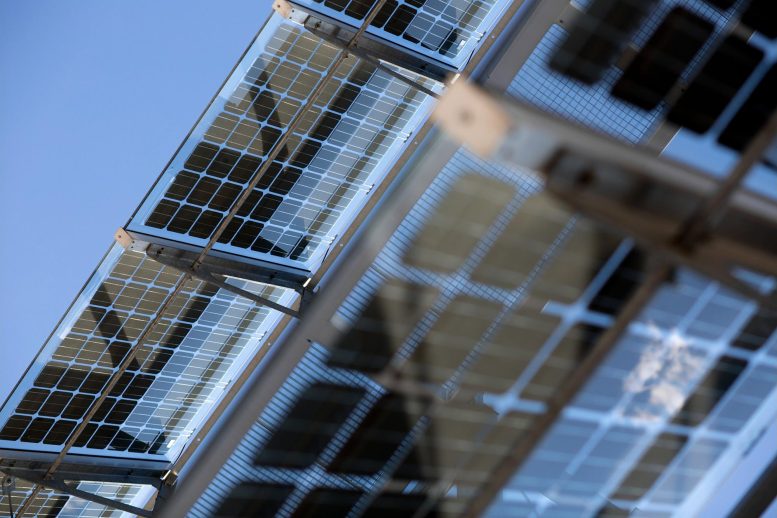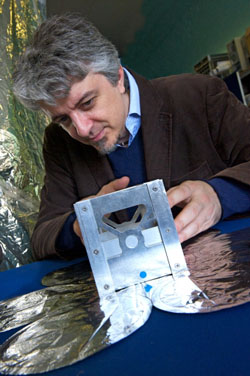
Research is underway on new equipment that will allow solar power to be gathered in space and transferred back to Earth through microwaves or lasers, providing renewable energy for the future and providing power to disaster areas or outlying areas that are difficult to reach by traditional means.
Solar power gathered in space could be set to provide the renewable energy of the future thanks to innovative research being carried out by engineers at the University of Strathclyde, Glasgow.
Researchers at the University have already tested equipment in space that would provide a platform for solar panels to collect energy and allow it to be transferred back to Earth through microwaves or lasers.
This unique development would provide a reliable source of power and could allow valuable energy to be sent to remote areas in the world, providing power to disaster areas or outlying areas that are difficult to reach by traditional means

Dr. Massimiliano Vasile, of the University of Strathclyde’s Department of Mechanical and Aerospace Engineering, who is leading the space-based solar power research, said: “Space provides a fantastic source for collecting solar power and we have the advantage of being able to gather it regardless of the time of the day or indeed the weather conditions.
“In areas like the Sahara desert where quality solar power can be captured, it becomes very difficult to transport this energy to areas where it can be used. However, our research is focusing on how we can remove this obstacle and use space-based solar power to target difficult-to-reach areas.
“By using either microwaves or lasers we would be able to beam the energy back down to earth, directly to specific areas. This would provide a reliable, quality source of energy and would remove the need for storing energy coming from renewable sources on ground as it would provide a constant delivery of solar energy.
“Initially, smaller satellites will be able to generate enough energy for a small village but we have the aim, and indeed the technology available, to one day put a large enough structure in space that could gather energy that would be capable of powering a large city.”
Last month, a team of science and engineering students at Strathclyde developed an innovative ‘space web’ experiment which was carried on a rocket from the Arctic Circle to the edge of space.
The experiment, known as Suaineadh – or ‘twisting’ in Scots Gaelic, was an important step forward in space construction design and demonstrated that larger structures could be built on top of a light-weight spinning web, paving the way for the next stage in the solar power project.

Dr. Vasile added: “The success of Suaineadh allows us to move forward with the next stage of our project which involves looking at the reflectors needed to collect the solar power.
“The current project, called SAM (Self-inflating Adaptable Membrane) will test the deployment of an ultra light cellular structure that can change shape once deployed. The structure is made of cells that are self-inflating in vacuum and can change their volume independently through nanopumps.
“The structure replicates the natural cellular structure that exists in all living things. The independent control of the cells would allow us to morph the structure into a solar concentrator to collect the sunlight and project it on solar arrays. The same structure can be used to build large space systems by assembling thousands of small individual units.”
The project is part of a NASA Institute for Advanced Concepts (NIAC) study led by Dr. John Mankins of Artemis Innovation. The University of Strathclyde represents the European section of an international consortium involving American researchers, and a Japanese team, led by Professor Nobuyuki Kaya of the University of Kobe, a world leader in wireless power transmission.
The NIAC study is demonstrating a new conceptual design for large-scale solar power satellites. The role of the team at the University of Strathclyde is to develop innovative solutions for the structural elements and new solutions for orbit and orbit control.